100 Years Ago - part 3
Memoirs - Chapter 1
Your author-here-present has enjoyed the extraordinary good fortune of acquiring the memoirs of a completely delightful lady who lived in Belleville from 1910 until 1952. Originally a resident of New York City, she made frequent vacation and weekend trips here beginning in 1910 until, so captivated by the beauty of the town and it's people, she moved here permanently in 1914. With an enchanting pallet of glowing, heart-felt, flowering phrases, she paints for us a wonderful word-picture of our town as it was at the beginning of the 20th Century. We will meet her friends and neighbors, many of whose names are familiar to us who know our town's history, and see our town through her eyes as it was in those days. Bertha Feuer wrote these words during her final days with the hope that they would be transmitted to future generations so that they, too, could understand what a special town it was. That will happen. Those parts of the memoirs which cover the period from 1910 to 1918 will be presented here in two parts, this is the first.
A huge Thank-you is in order to Carolyn Acceturo, granddaughter of Bertha Feuer, who provided these memoirs to me, and through me to the Town of Belleville and Susan Carpenter, another granddaughter, who so kindly provided an electronic version of the original hand-written text.
It begins -
To Bertha, the city of Belleville was a real vacation after leaving the crowded City of New York, How she enjoyed the row of houses that belonged to old Joralemon Station at Cortlandt St. between Joralemon Street near Little. The rents that year was only $15 for a whole house of 10 rooms and beautiful grounds to the bargain. Well, at the corner of Joralemon and Cortlandt lived a friend of ours, also from New York.
Previous to 1914, say about 1910, Grader Kahn namely Manz, now deceased, rented that house and we did enjoy many a weekend vacation. Her daughter, Flora, who was as wild as we were, always gathered us all together with her Aunt Rose B. and up to Hill Side Park** for a great time. That’s what the Park was called then. ** [this is a reference to Hillside Pleasure Park, Belleville's great amusement park.]
Later we all decided to move to Belleville and settle down. Our friend Mildred Stone known to us as Millie, jolly and full of fun, rented at 401 Cortlandt St. from the Joralemon Estate. The lumber yard always was at the corner of Cortlandt and Joralemon. The Main St. north of Joralemon, past Eastwood's Wire Works was known to us as lovers lane. Up Belleville way to the Nutley line our children and crowd would walk to the reservoir on Main St. to fish for gold fish and steal a swim in the cool reservoir.
Along the roads of Main Street from Joralemon to the Delawanna Bridge we would walk and pick Elderberry blossoms, when in full bloom. These were to make our pancakes from which were delicious. When the berries were up we would pick them ripe, to make Elder Berry wine.
They were real good old days and the gang of us felt like children that had discovered the Fountain of Youth as we never wanted to grow old. Years slipped by and changes always come about so we moved to Main St., No. 367, a very nice house owned by Eastwood's.
Our main entrance was Main Street, but we also had a side entrance at Joralemon Street. Billy Hamel, one of John Eastwood's employees, would come for the rent and tell us tall tales. How we laughed. It Kept us young.
My friend Millie Grady, a Mrs. Halderman also formerly Mrs. Wells, lived next door to us. Mrs. Halderman taught Sunday school at the Methodist Church. The people now mentioned have all deceased. We had grand days and picnic together.
It was Belleville like the song La Swiss, La Bella or Belleville is Beautiful. Along the Passaic River that flowed thither to dither occasional boats would sail along, especially tug boats. It was everlastingly interesting to us, to get up in the attic rooms where we could gaze quite distances, almost to the skyline of the Palisades of the Hudson River, across Sigler (?) Hill Sides Farm to what seemed to us a vast wilderness. We were able to walk across the bridges of the Passaic, the Rutgers St. bridge, also the Delawanna, to all the different suburbs across the river.
We could walk to Clifton, Nutley, Bloomfield, which was at the border of Soho or where Isaac Hendrick's Copper works were. We could put a foot in the Silver Lake, Newark, or Silver Lake Belleville or Bloomfield and even walk through the woods straight up dirt roads into Glen Ridge and Montclair. For 5 cents car fare we could go almost anywhere. Almost to Eagle Rock for not much more than a nickel. Dear old nickels, then, meant so much to us. Sometimes we would walk to city line, North Newark and then to Newark on the No. 18 bus; in 10 minutes we were to Broad and Market. A very old market was on Broad St, which ran on the old Morris Canal near Commerce St in Newark all the way to Mulberry Street, then the downtown of Newark, was a thrill to us even though it had no comparison to New York’s Chinatown.
We would leave early in the morning for Newark, to the market, and bring home large shopping bags full of all the goodies money could buy. Sometimes the packages were larger than we were able to handle. We would also love to browse over to New York by the way of the Erie Railroad or the Hudson Tubes. We were the gypsies that knew our way around. Dear, merry, laughing days of good 1914.
The part of Main Street from Joralemon St. going toward Newark on both sides of Main St. were real old time beautiful homes as far as Mill St., Belleville, where our town ended and then River road of Newark began. It was also a pretty sight to see, although Belleville once took in territory as far down as Mt. Pleasant Cemetery, Woodside and Forest Hill in 1914 it only started from Mill St. to the Nutley line, taking in the swampy section of Silver Lake, Belleville and good old Soho.
Those were just a few of the neighbors mentioned at that part of Belleville. Tenants of Eastwood. Old man Roberts worked for Eastwood, when they had a team of horses to pull their work. And in the neighborhoods on Ralph Street etc. were many Roberts as they were a large family. In a little house at the corner of Joralemon lived Mame and her family. Roberts. These folks all are deceased now.
Mamie had the finest garden of corn and tomatoes. For 50 cents we could buy a bargain of her. The house was sold so she moved to Ralph street right in back from where we lived. An old type brick building on this street lived Norman and his wife and most of the Roberts family. Up at Washington Ave. opposite the Episcopal Church was Richard's Hardware store, Kenworthy the corner bakery and Levine the tailor.
We would stroll up to Kenworthy's and have an ice cream soda and buy our newspapers of him. Old Westlake, now passed away, had quite a paper route, but we only purchased his papers when I moved toward the Town Hall at Main St., 127, in the year 1918.
(In 1918) ..I moved into two rooms rented from Mary Ella Osborne. The house was an old revolutionary landmark built in about 1765 or somewhat by an Englishman and was one time owned by Hugh Holmes. Mr. Osbourne was one of the first druggists in town and his father-in-law, a Wessely Dickinson liked the place so much that Mr. Osborn bought the place and fixed it up for us to live in. He, his wife Mary Ella, and Julliette Dickinson and Wessley Dickinson, moved in and were happy and proud of the place. They had horse and carriage. Dud Hogs, an old time colored man worked with the horse whose name was Pet and Mr. Dickinson, the bank note engraving inventor, brought a peacock to run around the grounds.
It was a beautiful sight to pass and gaze into the place. Mary Ella Osborne nee Dickinson loved flowers and garden work. Nothing was missing out of those grounds. Julliette was the artist who taught painting. Since Wessley Dickinson invented his engraving machine, his 3 sons Ed, Charley and Clem (?) went to foreign lands to teach students to run the said machines.
Wesley Dickinson worked in his little machine shop in Belleville, Ed Dickinson went to China for two years. While he was gone, Nellie his wife, and daughter Stella, lived with Ella Osborn at the mansion. Clem went to England and Charley to Portugal. While in foreign lands Mr. Wessley Dickinson died, so Charley was not notified until he came back.
The homes on the river were beautiful and there were many old landmarks.
Next door to the old mansion house on Main St. the Cole family lived. Mr. Cole brought the old Osborne homestead from Mr. Mertz. The house ran from Main St. to about 50 ft. and its other 50 ft. facing Stephan St. lived Will Osborne a nephew of Howard Osborn’s. We all got along splendid. Singing Pat used to deliver mail at that time.
There were two great big cottonwood trees very old, every bit of 100 or 150 years of age about the center of the grounds and they were beautiful. Flowers would grow very high and when a bad storm came up what a beautiful sight. Flowers would blow down that looked like a tulip. We would exhibit at Howard Osborne’s Drugstore they were that beautiful. To the Cole family, one of them, Margaret, would swear she seen ghosts under those trees.
Typical Irish Fairy Tales were told by Mrs. Cole herself. She was from County Kerry or Cork Ireland. I would sit hours listening to the fairy tales of Ireland and their haunted castles that sometimes I would go home and dream that I was also haunted, as the rooms at 127 Main St. were immensely large. What a joke. We finally had to move from there. The property was sold after the Osbornes occupied the house 27 years. Ed Dickinson once enjoyed many a day at this old mansion of Main Street.
They are gone the houses on the river. Gone like Rip Van Winkle who slept 20 years in the mountains. I face up and down the street of Main Street thinking to myself about the houses and the characters that lived on the Passaic River. The fire that burnt down a row of houses, the flood, etc.
Howard Osborne’s drugstore was flooded. So were all the houses as far as Main to Second River and the Delawanna Bridge, to Cortlandt Street, Stolz Bakery. Damages were terrific and many lost what belonged to them. Row boats and hip boots were used in some of the Main St. homes. What could be saved was carried to higher floors and attics. John Osborne’s house on John St. was flooded bad enough to rot everything, as the house was built without a cellar. Mr. Howard Osborne related the story to me.
It seemed the deluge was on after the water receded. Thousands of people came to view the flood. There were two of these. The last one was the most serious. Some dam, I believe, the Dundee near Passaic or Paterson, gave way causing the river to rise above level.
[Continued next installment.]
Your author-here-present has enjoyed the extraordinary good fortune of acquiring the memoirs of a completely delightful lady who lived in Belleville from 1910 until 1952. Originally a resident of New York City, she made frequent vacation and weekend trips here beginning in 1910 until, so captivated by the beauty of the town and it's people, she moved here permanently in 1914. With an enchanting pallet of glowing, heart-felt, flowering phrases, she paints for us a wonderful word-picture of our town as it was at the beginning of the 20th Century. We will meet her friends and neighbors, many of whose names are familiar to us who know our town's history, and see our town through her eyes as it was in those days. Bertha Feuer wrote these words during her final days with the hope that they would be transmitted to future generations so that they, too, could understand what a special town it was. That will happen. Those parts of the memoirs which cover the period from 1910 to 1918 will be presented here in two parts, this is the first.
A huge Thank-you is in order to Carolyn Acceturo, granddaughter of Bertha Feuer, who provided these memoirs to me, and through me to the Town of Belleville and Susan Carpenter, another granddaughter, who so kindly provided an electronic version of the original hand-written text.
It begins -
To Bertha, the city of Belleville was a real vacation after leaving the crowded City of New York, How she enjoyed the row of houses that belonged to old Joralemon Station at Cortlandt St. between Joralemon Street near Little. The rents that year was only $15 for a whole house of 10 rooms and beautiful grounds to the bargain. Well, at the corner of Joralemon and Cortlandt lived a friend of ours, also from New York.
Previous to 1914, say about 1910, Grader Kahn namely Manz, now deceased, rented that house and we did enjoy many a weekend vacation. Her daughter, Flora, who was as wild as we were, always gathered us all together with her Aunt Rose B. and up to Hill Side Park** for a great time. That’s what the Park was called then. ** [this is a reference to Hillside Pleasure Park, Belleville's great amusement park.]
Later we all decided to move to Belleville and settle down. Our friend Mildred Stone known to us as Millie, jolly and full of fun, rented at 401 Cortlandt St. from the Joralemon Estate. The lumber yard always was at the corner of Cortlandt and Joralemon. The Main St. north of Joralemon, past Eastwood's Wire Works was known to us as lovers lane. Up Belleville way to the Nutley line our children and crowd would walk to the reservoir on Main St. to fish for gold fish and steal a swim in the cool reservoir.
Along the roads of Main Street from Joralemon to the Delawanna Bridge we would walk and pick Elderberry blossoms, when in full bloom. These were to make our pancakes from which were delicious. When the berries were up we would pick them ripe, to make Elder Berry wine.
They were real good old days and the gang of us felt like children that had discovered the Fountain of Youth as we never wanted to grow old. Years slipped by and changes always come about so we moved to Main St., No. 367, a very nice house owned by Eastwood's.
Our main entrance was Main Street, but we also had a side entrance at Joralemon Street. Billy Hamel, one of John Eastwood's employees, would come for the rent and tell us tall tales. How we laughed. It Kept us young.
My friend Millie Grady, a Mrs. Halderman also formerly Mrs. Wells, lived next door to us. Mrs. Halderman taught Sunday school at the Methodist Church. The people now mentioned have all deceased. We had grand days and picnic together.
It was Belleville like the song La Swiss, La Bella or Belleville is Beautiful. Along the Passaic River that flowed thither to dither occasional boats would sail along, especially tug boats. It was everlastingly interesting to us, to get up in the attic rooms where we could gaze quite distances, almost to the skyline of the Palisades of the Hudson River, across Sigler (?) Hill Sides Farm to what seemed to us a vast wilderness. We were able to walk across the bridges of the Passaic, the Rutgers St. bridge, also the Delawanna, to all the different suburbs across the river.
We could walk to Clifton, Nutley, Bloomfield, which was at the border of Soho or where Isaac Hendrick's Copper works were. We could put a foot in the Silver Lake, Newark, or Silver Lake Belleville or Bloomfield and even walk through the woods straight up dirt roads into Glen Ridge and Montclair. For 5 cents car fare we could go almost anywhere. Almost to Eagle Rock for not much more than a nickel. Dear old nickels, then, meant so much to us. Sometimes we would walk to city line, North Newark and then to Newark on the No. 18 bus; in 10 minutes we were to Broad and Market. A very old market was on Broad St, which ran on the old Morris Canal near Commerce St in Newark all the way to Mulberry Street, then the downtown of Newark, was a thrill to us even though it had no comparison to New York’s Chinatown.
We would leave early in the morning for Newark, to the market, and bring home large shopping bags full of all the goodies money could buy. Sometimes the packages were larger than we were able to handle. We would also love to browse over to New York by the way of the Erie Railroad or the Hudson Tubes. We were the gypsies that knew our way around. Dear, merry, laughing days of good 1914.
The part of Main Street from Joralemon St. going toward Newark on both sides of Main St. were real old time beautiful homes as far as Mill St., Belleville, where our town ended and then River road of Newark began. It was also a pretty sight to see, although Belleville once took in territory as far down as Mt. Pleasant Cemetery, Woodside and Forest Hill in 1914 it only started from Mill St. to the Nutley line, taking in the swampy section of Silver Lake, Belleville and good old Soho.
Those were just a few of the neighbors mentioned at that part of Belleville. Tenants of Eastwood. Old man Roberts worked for Eastwood, when they had a team of horses to pull their work. And in the neighborhoods on Ralph Street etc. were many Roberts as they were a large family. In a little house at the corner of Joralemon lived Mame and her family. Roberts. These folks all are deceased now.
Mamie had the finest garden of corn and tomatoes. For 50 cents we could buy a bargain of her. The house was sold so she moved to Ralph street right in back from where we lived. An old type brick building on this street lived Norman and his wife and most of the Roberts family. Up at Washington Ave. opposite the Episcopal Church was Richard's Hardware store, Kenworthy the corner bakery and Levine the tailor.
We would stroll up to Kenworthy's and have an ice cream soda and buy our newspapers of him. Old Westlake, now passed away, had quite a paper route, but we only purchased his papers when I moved toward the Town Hall at Main St., 127, in the year 1918.
(In 1918) ..I moved into two rooms rented from Mary Ella Osborne. The house was an old revolutionary landmark built in about 1765 or somewhat by an Englishman and was one time owned by Hugh Holmes. Mr. Osbourne was one of the first druggists in town and his father-in-law, a Wessely Dickinson liked the place so much that Mr. Osborn bought the place and fixed it up for us to live in. He, his wife Mary Ella, and Julliette Dickinson and Wessley Dickinson, moved in and were happy and proud of the place. They had horse and carriage. Dud Hogs, an old time colored man worked with the horse whose name was Pet and Mr. Dickinson, the bank note engraving inventor, brought a peacock to run around the grounds.
It was a beautiful sight to pass and gaze into the place. Mary Ella Osborne nee Dickinson loved flowers and garden work. Nothing was missing out of those grounds. Julliette was the artist who taught painting. Since Wessley Dickinson invented his engraving machine, his 3 sons Ed, Charley and Clem (?) went to foreign lands to teach students to run the said machines.
Wesley Dickinson worked in his little machine shop in Belleville, Ed Dickinson went to China for two years. While he was gone, Nellie his wife, and daughter Stella, lived with Ella Osborn at the mansion. Clem went to England and Charley to Portugal. While in foreign lands Mr. Wessley Dickinson died, so Charley was not notified until he came back.
The homes on the river were beautiful and there were many old landmarks.
Next door to the old mansion house on Main St. the Cole family lived. Mr. Cole brought the old Osborne homestead from Mr. Mertz. The house ran from Main St. to about 50 ft. and its other 50 ft. facing Stephan St. lived Will Osborne a nephew of Howard Osborn’s. We all got along splendid. Singing Pat used to deliver mail at that time.
There were two great big cottonwood trees very old, every bit of 100 or 150 years of age about the center of the grounds and they were beautiful. Flowers would grow very high and when a bad storm came up what a beautiful sight. Flowers would blow down that looked like a tulip. We would exhibit at Howard Osborne’s Drugstore they were that beautiful. To the Cole family, one of them, Margaret, would swear she seen ghosts under those trees.
Typical Irish Fairy Tales were told by Mrs. Cole herself. She was from County Kerry or Cork Ireland. I would sit hours listening to the fairy tales of Ireland and their haunted castles that sometimes I would go home and dream that I was also haunted, as the rooms at 127 Main St. were immensely large. What a joke. We finally had to move from there. The property was sold after the Osbornes occupied the house 27 years. Ed Dickinson once enjoyed many a day at this old mansion of Main Street.
They are gone the houses on the river. Gone like Rip Van Winkle who slept 20 years in the mountains. I face up and down the street of Main Street thinking to myself about the houses and the characters that lived on the Passaic River. The fire that burnt down a row of houses, the flood, etc.
Howard Osborne’s drugstore was flooded. So were all the houses as far as Main to Second River and the Delawanna Bridge, to Cortlandt Street, Stolz Bakery. Damages were terrific and many lost what belonged to them. Row boats and hip boots were used in some of the Main St. homes. What could be saved was carried to higher floors and attics. John Osborne’s house on John St. was flooded bad enough to rot everything, as the house was built without a cellar. Mr. Howard Osborne related the story to me.
It seemed the deluge was on after the water receded. Thousands of people came to view the flood. There were two of these. The last one was the most serious. Some dam, I believe, the Dundee near Passaic or Paterson, gave way causing the river to rise above level.
[Continued next installment.]
 An engraving of one of the many mansions that lined Main Street
An engraving of one of the many mansions that lined Main Street Lover's Lane in 1912 from an old postcard.
Lover's Lane in 1912 from an old postcard.* * *
Need a Clark Bar ?

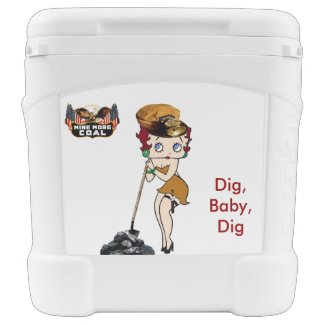
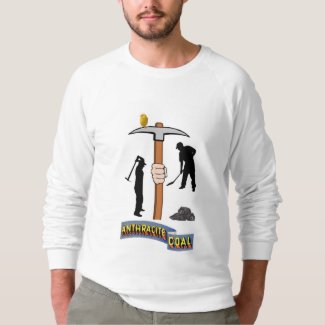

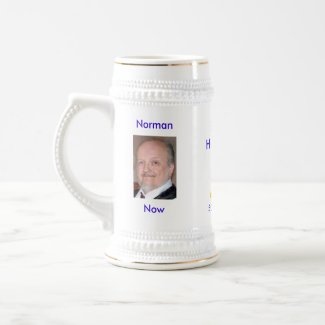

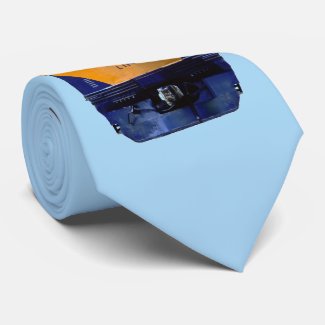
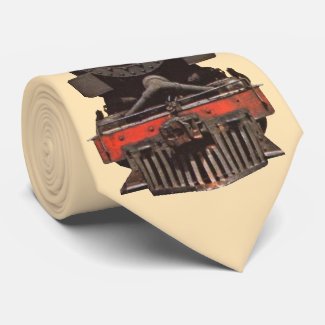
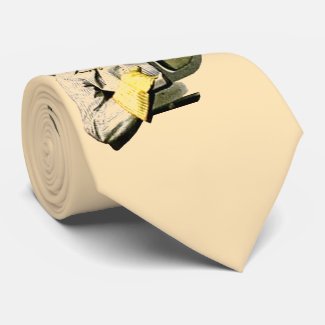






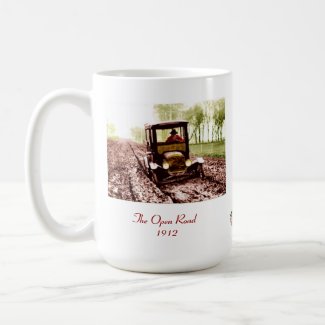
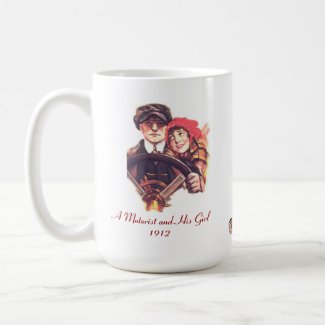
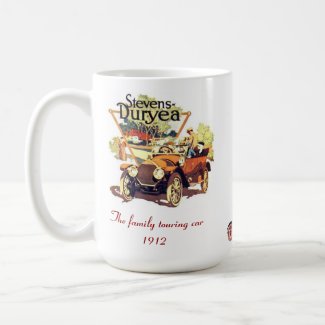
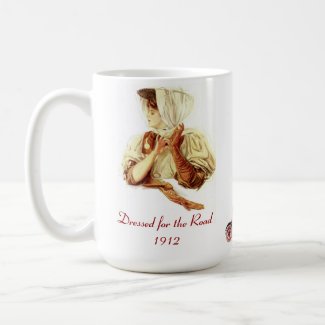
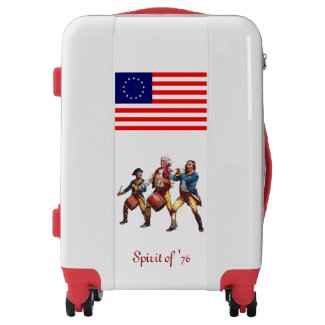
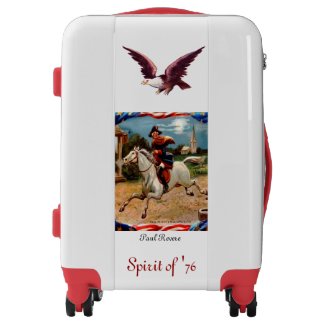
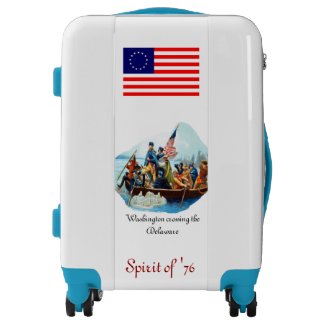
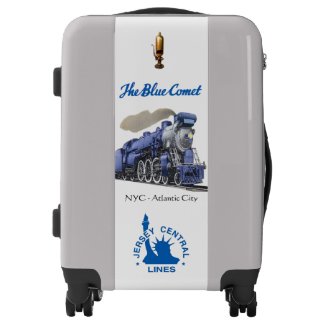
<< Home